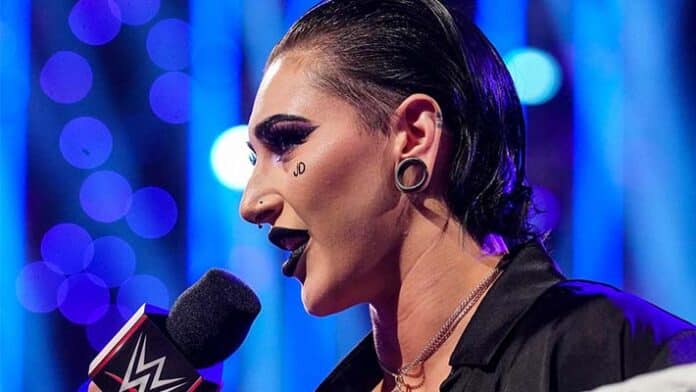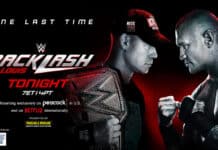
After this week’s three-hour episode of Raw, a few different aspects of the product were reinforced, both positive and negative, depending on what angles were on course as opposed to those that seem to just tread water to buy time. That’s not necessarily a knock, either, but rather to point out that a few portions of the show are clearly on autopilot until the proper stage is there for the payoff.
Some might say that WWE is in a hot period right now, but given that Raw, the flagship show of the company, sometimes dips under two million viewers, I have to disagree. To put it in perspective, during the dying days of WCW, Thunder, the B-show of the Turner organization, still garnered a 2.6 in the ratings, simply because the sport was actually in a boom period at the time. So, no sports entertainment is not reaching another peak, especially given that much of WWE’s success in recent years was based on the climate of the television business, not the popularity of the product. In fact, during the initial Brock Lesnar title run after he broke the streak at Wrestlemania when he was rarely on television, and the ill-fated Roman Reigns super baby face push that completely flopped, viewership declined every year for several years in a row.
A more accurate description, at least in my view, is that WWE isn’t in a boom period, but rather what they are presenting receives very positive feedback from its audience. The number of fans watching isn’t anywhere near a hot period, but given the quality content, the fans that are still regular viewers are willing to invest both time and money into the current product. That’s not a back-handed compliment to WWE management either, they have record-setting profit, completed a blockbuster merger worth $21.9 billion, and their fan base is satisfied enough to pay very steep ticket prices for the signature pay-per-view events on the calendar.
For a comparison, just a few years ago, WWE brass had to bring Stone Cold out of retirement to try to move more tickets for the two-night Wrestlemania at the massive AT&T stadium. On the flip side, there are already more than 40,000 tickets sold for each night of Wrestlemania in Philadelphia next year.
Ironically, the success already achieved more or less puts some angles in a holding pattern to give them the payoff at the big stages like The Royal Rumble, Wrestlemania, etc. Given that there were some resolutions with the strike in Hollywood, The Rock’s potential availability for WM in 2024 still seems to be undetermined. Obviously, if management can ink Dwayne Johnson to another match, it’s too good of a proposition to pass up, especially when you take into account the major main stream press it would get and the casual fans that would tune in for it, which all translates to a boost for the TKO stock.
However, if there’s not a possibility, the natural option appears to be that Cody Rhodes gets a rematch against Roman Reigns, a return bout that would be a year in the making and could add another layer to the storyline. I have to be honest, when Cody didn’t win the title this year at WM, I didn’t think it was realistically possible to maintain his momentum, but the Brock Lesnar feud kept him strong as one of the top performers in the company. That being said, the set up for his match with Damian Priest at Crown Jewel was such a retread of the Lesnar feud that it’s obvious that the office is just trying to keep both of them busy until their individual angles have the chance to unfold. Brock injured Cody’s arm to stack the odds against the baby face as he tried to slay the monster, which makes sense, but the leg injury on Raw was a completely recycled concept that probably didn’t add that much in the grand scheme of things. More than anything, it’s noticeable that the office wants to keep as much distance as possible between Rhodes and Reigns until the time is right if the WM rematch is eventual booked. At the same time, Priest has the MITB contract and it looks like management wants to keep the audience guessing as to when he might cash-in for a title shot.
Speaking of the eventual cash-in, the Seth Rollins involvement on the show was almost moot. Unfortunately, when the premise of the championship was the consolation prize title, there’s just not a lot of steam or investment behind what the character does on the show. Don’t get me wrong, Rollins is a tremendous performer, but as I’ve said before, I don’t think the character makes sense at all. Sure, the song is over, but is the character really over? More than anything, Seth seems like a placeholder champion until the belt can be used to elevate a performer and thus give the belt more of a purpose that provides an opportunity for progress on the brand. It goes without saying that Damian Priest could be used for that role with the MITB contract, and it might be a way to add something more to the title than “the belt that was created because Roman Reigns works a limited about of shows” on Raw. In a similar fashion to Rollins as champion, Drew McIntyre almost appears to be typecast as a placeholder challenger so to speak, as far as when there needs to be a credible challenger, Drew is usually the choice, but it’s doubtful that there are plans for McIntyre to get another run as champion. For whatever reason, despite the fact that he was guy during the bulk of the pandemic era, it almost seems like the office has a “been there, done that” mindset in terms of Drew as the champion. Make no mistake about it, Drew is one of the best performers on the roster, but he can only be put in the challenger role so many times before the audience knows that there’s not a chance that he will win the belt.
As a result of those dynamics, the entire Rollins/McIntyre angle seems moot, especially until the possible Damien Priest cash-in for the MITB contract.
On the other end of the spectrum, the women’s division, often the most consistent aspect of WWE programming, is one of the strong points of the Monday night show. Rhea Ripley is such a top-notch performer and given her age, assuming she can avoid any major injuries, WWE brass has a major star on the roster for at least the next decade. The set up for the match at Crown Jewel was more of a way to push Rhea’s character than to stall for a bigger angle on the horizon. Along with that, Becky Lynch has done very well as the NXT Women’s champion and added a lot of star power to the brand. Overall, the women’s division is one of the main reasons to tune into Raw, based on the quality of the in-ring action and the dynamic characters in the division.
As much as I don’t understand why Logan Paul is famous or why anyone cares what he did on Youtube, he undoubtedly the athletic ability to excel in the WWE. I’m not sure his audience will truly translate to regular WWE viewers, as his previous appearances on television didn’t necessarily spike the numbers, but the company’s investment in him might be purely for the publicity from his involvement in WWE events. For example, the Saudi government pays hefty cash for American star power as a part of its propaganda campaign, and booking Logan Paul for a match against Rey Mysterio at Crown Jewel gives the Saudis what they are paying for. Again, I don’t think he will boost weekly ratings, but he did very well with the promo and the set up for the Mysterio match.
It was said for more than a decade, but a three-hour weekly show is often a tedious viewing experience, and the fact that the numbers almost always dip in the third hour demonstrates that, but the macro view of WWE, especially for aspects beyond just the in-ring product, look very optimistic for the organization. Sure, there’s some stalling for the angles with Cody, Reigns, and Rollins, but there’s enough potential for very compelling content on the horizon that the audience looks to be willing to see how the storylines unfold. Cody vs. Roman, Jimmy vs. Jey at Wrestlemania, and the potential Damien Priest cash-in intriguing possibilities. Plus, the company is on track to sell nearly 100,000 tickets combined for a two-night Wrestlemania event so that will secure the stock price for the TKO group next year.
What do you think? Share your thoughts, opinions, feedback, and anything else that was raised on Twitter @PWMania and Facebook.com/PWMania.
Until next week
-Jim LaMotta
E mail [email protected] | You can follow me on Instagram, Facebook, & Threads @jimlamotta89







